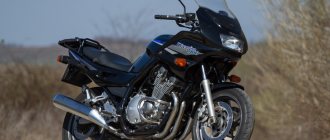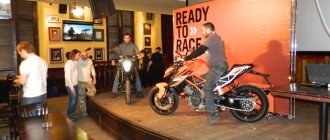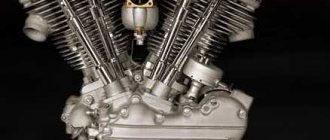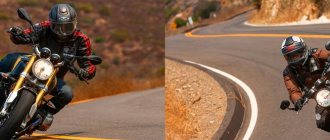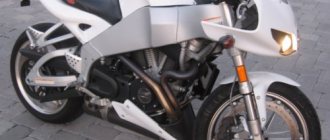Powerful, modern motorcycles with classic shapes have enjoyed considerable popularity lately, and BMW Motorrad has a lot to say in this segment. Meet the Heritage line cars.
Beauty is eternal. It's no surprise that successful models don't die in the automotive industry. Yes, from time to time they go into the shadows, yielding to the whims of fashion, but then they return as inspiration for new models. Classic designs are timeless and will always have a loyal following. Especially when combined with the latest technology. This, and a large dose of emotion, captures the hearts and souls of motorcyclists, as the people of BMW Motorrad know well.
BMW knows how important tradition and attachment to one's roots are. How important is consistency, which is an expression of brand loyalty. A loyalty that many motorcyclists keep throughout their lives. BMW Motorrad, in addition to tradition, also has the latest technology and knowledge, so the success of the Heritage line is not surprising.
Features of the BMW R nineT
When the phenomenal BMW R nineT was born a few years ago, the world held its breath. The motorcycle combined a rugged, classic character with the most modern technology. It immediately became a cult car. An appetite for more quickly emerged, followed by new Heritage models: the R Nineta Pure, Scrambler and Urban Racer G/S.
All of them are equipped with proven 1170 cc engines. cm air/oil cooled, 110 horsepower. They have modular frames, allowing for plenty of customization options for enthusiasts, and brakes with 4-piston monobloc calipers and floating discs. Characteristic features of the series also include BMW's attention to detail, high quality finishes, reliability, a wide range of accessories, as well as engine culture and excellent traction.
BMW R NineT: test drive from Popular Motors magazine
BMW R Nine T Herr hipster, your motorcycle is ready! The BMW R NineT truly impresses with its premium finish and bold, stripped-down appearance. Seeing this bike in photographs is one thing, but seeing it in the flesh is something else entirely. It is then that you can appreciate the original design of this model.
NineT is the result of influences from both the expected and the unexpected. As its name suggests, the R nineT in some ways pays homage to the 90th anniversary of the BMW R 32, launched in 1923. The nineT uses a modern version of that bike's horizontally opposed, air-oil-cooled Boxer engine from the R1200R and last year's RT.
The R1200R is an incredibly practical machine that can do anything. Everything except the cool appearance. To make the bike cooler, BMW turned to Ola Stenegard, a Swedish native who is now head of vehicle design at BMW Motorrad. Stenegard has previously worked on custom motorcycles (mostly Harleys and Triumphs), so his design style differs from typical BMW style, and this is reflected in the nineT. It was Stenegard who took part in the creation of the BMW Lo Rider concept demonstrated in 2008, which is the obvious predecessor of the nineT.
While BMW has a huge number of people working on new models, Stenegard says most of the work on the nineT was done "outside the system" and the design team working on the bike was the smallest of any BMW model in at least the last ten years. years. “It was difficult to predict sales figures. I can’t believe that we decided to do this at BMW,” said Stenegard. But the sales level of the nineT turned out to be more than worthy: the motorcycle has already taken fourth place in sales in the BMW model range. What's also interesting is that the average age of nineT buyers is the youngest of all BMW buyers. Moreover, the motorcycle attracts the attention of many people who cannot be called typical buyers of models of this brand. “The BMW is no longer ‘the motorcycle my father rides,’” said Sergio Carvajal, brand manager for BMW Motorrad USA, wryly.
Customization
The ability to customize the nineT was a key aspect of the bike's design and creating what Stenegard called a "blank canvas." For example, the engine wiring harness is separate from the motorcycle wiring harness, making it much easier to install additional electrical accessories like headlights, turn signals, and even new dash gauges.
The tubular steel frame, specially developed for the nineT, is also designed for customization. It consists of four modular elements: the main frame (the Boxer engine is used as a structural element), the rear main frame, the end frame and the rear seat frame. The last two elements can be easily removed; you just need to unlock eight fasteners.
In addition, the Paralever drive system housing includes three mounting points that can be used to install a bracket to position the license plate and brake/tail light on one side.
Quality finish
The finish quality of the nineT is amazing, and the finish of the bike can only be fully appreciated by seeing it in the flesh. The gas tank is made of aluminum, a fairly expensive metal to form and weld. The tank is decorated with unpainted and hand-sanded sides, which are also covered with a transparent layer of a special coating to preserve their beauty.
Beautiful aluminum elements can be found in many parts of the bike. Please note that the front fender brackets, seat post and cross bars are made from high quality forged aluminum parts with a shot peened anodized finish. Even the steering damper mount, which is barely visible, is a beautiful piece of forged aluminum and Stenegard's favorite unsung component of the bike. Light metal is also used in the conical design of the steering wheel.
The valve cover is made from even lighter magnesium. The black anodized alloy wheels, stainless steel spokes and black aluminum hubs add a bit of retro flair to the bike. The stainless steel mufflers from Akrapovic look very cool for stock components, although they do obscure the rear wheel, which is otherwise exposed by the single-sided Paralever swingarm. BMW's options also include a titanium Akrapovic muffler ($957 in the US), which can be mounted high or low depending on the mid-pipe option you order.
Test Drive
In fact, the NineT is even smaller and neater than in the photographs, and sitting behind the wheel, it seems that the seat is lower than the height declared by the manufacturer - 785 millimeters. The bike feels very narrow between the knees. BMW representatives say the bike weighs 222 kilograms, of which approximately 12 kilograms is gasoline in the tank.
The footrests are located comfortably, and the driver’s legs themselves are unobtrusively bent; You need to reach forward a little towards the steering wheel. Both handles are adjustable in width to accommodate fingers of all sizes. The instrument panel is a mixture of classic and modern: an analogue speedometer and tachometer are located on either side of the liquid crystal panel, where, in addition to traditional elements such as a clock, trip meters and a gear indicator, fuel consumption and its reserve are shown.
Once you fire it up, the nineT sounds and feels like any pre-Wasserboxer engine, which rumbles unevenly at idle in a way that's either annoying or unique, depending on how you look at it. Specifications: The 1,170 cc air-oil-cooled engine remains unchanged: 119 Newton meters (88 ft-lb) of torque at 6,000 rpm and 110 horsepower at 7,550 rpm. The rev limiter is activated at 8500 rpm.
These figures may not seem very impressive, but that is until you sit behind the wheel and squeeze the gas. For the extra power, BMW borrowed gears from the RT-P police car, lowering the final drive ratio from 2.75:1 to 2.91:1. The result is low-end performance that's excellent, and the bike surges forward with arm-stretching agility at almost any speed. According to the manufacturer, the bike takes only 3.6 seconds to accelerate from 0 to 96 kilometers per hour (0-60 mph).
Shifting the transmission speeds doesn't require much effort, but it does take a little getting used to in order to do it smoothly. Significant engine braking can cause the rear tire to scrape the pavement during a sloppy downshift. This can be mitigated by competently tugging the throttle, to which the motorcycle will respond with a pleasant engine rumble during deceleration.
Low-speed agility is limited slightly by the non-adjustable steering damper, but the wide handlebars provide good leverage and allow for quick maneuvers when required. But the nineT still likes to turn into corners gracefully rather than being thrown into them harshly. Rake and trail (25.5 degrees, 103 millimeters) are standard for a bike of this type, and the wheelbase (1476 mm) is even quite short for a bike with a driveshaft.
As on all modern BMW motorcycles, anti-lock braking system (ABS) is standard. But there are no other electronic aids on this bike, so don't expect switchable riding modes or the aforementioned traction control system. When Ola Stenegård was asked if he would consider using linked brakes on the nineT, he shook his head and replied: “What about smoking tires?”
The nineT also lacks the Telelever front suspension found on all other BMW R-series models. In its place is an inverted fork borrowed from the S1000RR, but without the RR's adjustability. A traditional fork was chosen to facilitate customization. But there's an added benefit: the nineT handles and responds more naturally than bikes with Telelever suspension.
On the move, the fork does not respond as smoothly as on the RR - it would be interesting to install the “stuffing” from the RR into the nineT fork. Additionally, the gold anodized fork tubes look a little out of place on a black and silver bike. According to Stenegard, his team had some debate over the use of black tubes, but in the end it was decided to use gold ones.
Attached to the fork are strong monobloc radial calipers that provide powerful grip on the 320mm discs. The sharpness of the brakes takes a little getting used to, but they deserve an excellent rating. But the least impressive part of the nineT is at the back. While BMW's signature Paralever design makes maintenance much easier, the use of a driveshaft system had an impact on the bike's ride. The unsprung weight of the spoked wheel and inner tubes required for the tire and wheel combination certainly had a negative impact on ride quality. On the other hand, the hydraulic preload adjuster makes it easy to adjust the ride height depending on the load, and the infinitely variable rebound damping is just a screwdriver away.
The nineT's seat was surprisingly comfortable, despite its ironing board-like shape. The upholstery is not very soft, but there is enough space to change your driving position and feel comfortable for at least a couple of hours. The driving position makes driving at speeds of around 130 kilometers per hour (at 4,200 rpm) quite pleasant, despite the lack of wind protection.
The beautiful gas tank holds 18 liters of premium gasoline. Measurements during the test drive showed that fuel consumption averages 5.8 liters per 100 kilometers, so with a full gas tank, the motorcycle can travel a little more than 300 kilometers without refueling.
But practicality and efficiency are not the highest priority qualities for the owner of the 2014 BMW R NineT. The existing R1200R is much more versatile and practical, and is also significantly cheaper than the nineT, which costs $14,900 in the US. But when it comes to panache and unique design, the R1200R is no match for this bike.
Buy the 1200R if you want to cruise around the country with side bags and a windshield. Opt for the brand new nineT if you want to ride the coolest BMW motorcycle in years. And perhaps within a decade. And perhaps even in the entire history of BMW.
Source : Popular Motors magazine
Model review : BMW R Nine T
Heritage range
BMW R nineT
This motorcycle is difficult to confuse with other machines, as well as with the progenitor of the entire line. Conceived and created as a pure roadster. The perfect companion to experience freedom and drive on twisty roads. The powerful engine, excellent brakes and expressive character are captivating, so the popularity of this car is not surprising. The motorcycle is characterized by a simplified style and impeccable appearance at the same time. It embodies engineering consistency. Boxer engine, shaft drive, balanced proportions and innovation - advanced ABS and integrated traction control.
The car's developers assumed in advance that the R nineT would be rebuilt and adapted to the owner. Therefore, they took care of the appropriate opportunities for this. They created a modular design and a frame whose rear section can be easily removed. The open electronic interface allows the installation of additional elements.
BMW R nineT Pure
This is a more severe version - R nineT. A good choice for those who love classic style and want to have a real motorcycle.
.
The design refers to the aesthetics of the 70s and 80s, but not only. It also dates back to 1923, when the concept of a boxer-powered car was born. Like the R nineT, the R nineT Pure offers a wide range of personalization options. Features of the Pure version include, in addition to the Catalano Gray paint job, new telescopic forks and five-spoke alloy wheels.
BMW R nine T Scrambler
Combines a classic line with the features of a real scrambler. Works well both in a crowded city and on winding country roads or on a sandy beach. The powerful engine and high-mounted exhaust provide not only great looks, but also powerful acceleration combined with a unique sound. The comfortable driving position means that even long trips are not a problem for this car.
The R nineT Scrambler recalls the days of the legendary, original scramblers and has all the features of this model. There are lugged forks protected by a rubber accordion, a tall exhaust system, taller handlebars and a 19-inch front wheel. Cross-spoke wheels with off-road tires are also available as an option. They send a clear message that the ride is not limited to asphalt.
The stylish saddle, speedometer with analogue display, refined details and round headlight with BMW logo are the perfect complement to the classic look.
BMW R nineT Racer
This model is a car for people who are passionate about street racing. The R nineT Racer takes you back to the days when rocker cars raced on the streets.
Unlike the laid-back Scrambler, the R nineT's retro styling keeps the rider on his toes. Behind the stylish windshield, with his hands resting on the low-slung steering wheel, he can make the most of the engine and chassis.
The nineT is difficult to mistake for any other vehicle. He is characterized by elongated proportions and a slender figure. This is due to the special position of the deflector, fuel tank and seat. The forward-mounted, low-mounted clips and high-mounted rear footpegs force the rider into an active, sporty stance. The picture is completed by a black-painted engine and contrasting paintwork with characteristic BMW Motorsport stripes.
BMW R Nineta Urban G/S
The design of the R nineT Urban G/S is striking and screams that it belongs to the legendary R 80 G/S series that took part in the Paris-Dakar rally 40 years ago. Distinctive features such as the 19-inch front wheel, forks with the familiar accordion lugs, raised fender and a small fairing that hides the round headlight make it look like a roadster, but a rugged adventure machine. The narrow, slightly longer, red seat matches the climate, and the black engine and frame highlight the effect.
It's easy to imagine that the Urban G/S handles rough surfaces well, from gravel roads to dirt roads. And while it's not an off-road machine, it does come with spoked wheels and off-road tires, enduro running boards and an engine cover. This allows you to race on rough terrain.
Well-thought-out ergonomics make the R nineT Urban G/S stand out from the rest. The taller handlebar, long seat and wide footpegs create a more relaxed riding position. This makes travel even more fun.
Although RnineT Urban G/S is strongly associated with the past, modern technology is not alien to it. It is equipped with the engine and electronics of the R nineT model and complies with the EU-4 standard. It has ABS and optional traction control, and the brushed steel raised exhaust system makes the engine feel more pleasing to the ears.
Post Views: 1,446
BMW R Nine T in an unusual body
The capital's custom workshop ZILLERS GARAGE recently presented a completed custom project from the BMW R Nine T. The R Nine line itself, performed by BMW Motorrad, is unusual and combines classic traditions, without forgetting, however, about modern technologies. The masters from ZILLERS GARAGE have moved on.
These days the MotoSpring exhibition was supposed to take place and ZILLERS GARAGE intended to present the modified R Nine T live, but the coronavirus made its adjustments and all that remains for us is a press release.
The detail work on this bike is impressive. Often, the development of Dieselpunk style begins and ends with general forms, but not in this case. The orange illumination of the logo takes us back to the era of incandescent lamps and gas-discharge indicators. The controls, demonstrative rivets on the body, even the classic BMW stripe on this unit look appropriate, complementing the picture.
The technical features are no less interesting. The air suspension leaves just a few millimeters between the aluminum fairing and the ground when parking.
The increased width of the front tire looks more harmonious with the massive front end, while the redesigned exhaust opens up the cantilever swingarm, visually lightening the rear end.
Changes also include upgraded Brembo brakes. The elaboration of details is so serious that even the USB charging connector familiar to modern people is not just hidden in the tail, but hidden behind a special sliding panel. The demonstration can be seen on Instagram.
If the name of the customer of such beauty remains a secret, we can honor the authors now. This is Dmitry Golubchikov - the main author, and designer Mikhail Smolyanov. These names may not be known to the general public, but the result speaks for itself - the motorcycle was a success.
And it’s not just a matter of a successful combination of little things. Dieselpunk itself is a rare style, but this project is not the only one of its kind. The problem is that often neither the customer nor the contractor has a clear idea of what exactly needs to be done. And the result is a mixture of dieselpunk, steam punk and retrofuturism. The idea of Dieselpunk is based on the diesel engine, as a source of energy for civilization, and the technological level of the period between the two world wars. Take racing motorcycles from the 30s, add diesel, take them to the absolute level - you're done, before you is the ZILLERS GARAGE project.
The authors undoubtedly succeeded in conveying this atmosphere. The theme of seriousness and a predatory grin has been exploited by wheel industry designers for many years, but this unit creates a feeling of faceless and blind power, which is much more impressive. A minimum of shiny color and chrome parts, aerodynamic shapes, and a heavy, faceless “face” not only fit well, but together convey the necessary style, and attention to detail and precise fit create a feeling of completeness and serialization of the product. It’s easy to imagine the image of factories smoking the sky, the gloomy backyards of the smoke-stained walls of residential buildings and this motorcycle tearing through the night. It doesn’t matter who you see yourself behind the wheel as Judge Dredd or the Dark Knight of the diesel world. This motorcycle seems to really come from a parallel universe, the Dieselpunk universe - and that’s what makes it so good.


